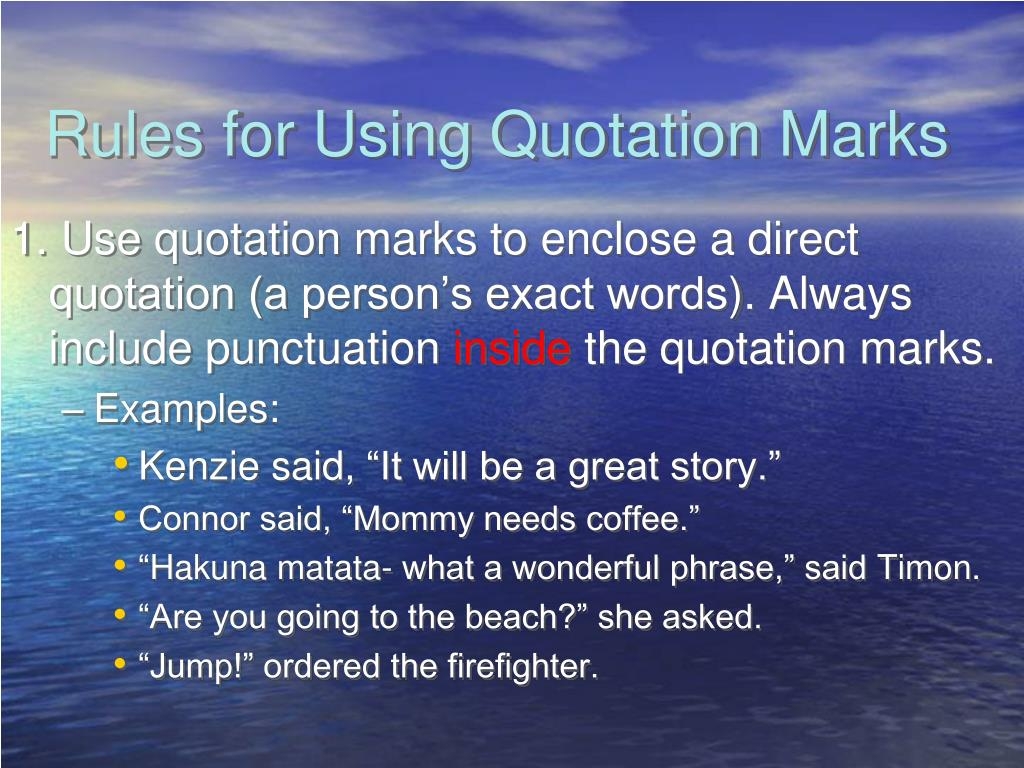Quotation marks are used in writing to indicate direct speech or to show that a specific word or phrase is being used in a special way. Using quotation marks correctly is important to ensure that your writing is clear and accurate.
It is essential to understand the rules of using quotation marks to avoid any confusion or misinterpretation in your writing. Let’s explore some tips on how to use quotation marks correctly.
1. Use Quotation Marks for Direct Speech
When writing dialogue, always enclose the spoken words within double quotation marks. For example, “I love to read,” said Sarah. This helps to distinguish the words spoken by different characters in a story or conversation.
2. Use Quotation Marks for Titles
Titles of shorter works, such as articles, poems, short stories, and songs, should be enclosed in quotation marks. For example, “The Raven” by Edgar Allan Poe is a famous poem. However, titles of longer works, like books and movies, should be italicized or underlined.
3. Use Quotation Marks for Specific Words or Phrases
When you want to highlight a specific word or phrase in your writing, use quotation marks. For example, The term “global warming” is often used to describe the increase in Earth’s temperature.
4. Use Quotation Marks for Definitions
When providing a definition or explanation of a word, phrase, or concept, enclose it in quotation marks. For instance, According to the dictionary, “happiness” is defined as a state of well-being and contentment.
5. Use Single Quotation Marks for Quotes within Quotes
When you have a quote within a quote, use single quotation marks to differentiate between the two levels of quotations. For example, He said, “She told me, ‘I will be there at 5 o’clock.'” This helps to avoid confusion for the reader.
In conclusion, using quotation marks correctly is essential for clear and effective writing. By following these tips and guidelines, you can ensure that your use of quotation marks is accurate and enhances the overall quality of your writing.
